Foxes are beautiful animals that are very diverse. There are many species around the world, but how about in Oregon? This article will explore the different fox species and will dive deeper into the foxes that call Oregon home.
Background
Species of Foxes
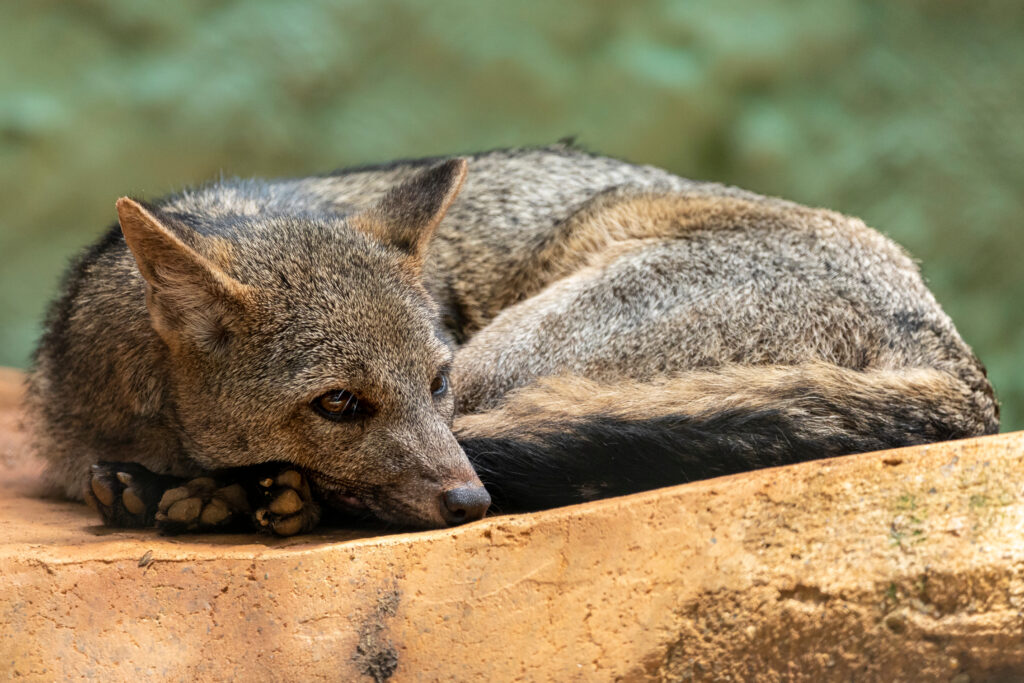
The crab-eating fox is also known as the forest fox, wood fox, bushdog or maikong.
©Murilo Mazzo/Shutterstock.com
Several species of foxes live around the world. In fact, there are 23 different species that live on every continent except Antarctica. These animals belong to 5 different genera, including the genus Vulpes which consists of 12 species of “true foxes”. The other genera are Cerdocyon (the crab-eating foxes), Lycalopex (the South American foxes), Urocyon (the gray fox and island fox species), and Otocyon (the bat-eared foxes). The most prolific genus is Vulpes which includes red foxes, Arctic foxes, kit foxes, Bengal foxes, fennec foxes, and 6 other species.
Species of Foxes in North America
Red Fox

Red foxes are the most populous species of fox in North America.
©Ondrej Prosicky/Shutterstock.com
The distribution of the six fox species in North America varies in different regions, which reflects their adaptability to diverse habitats. There are 6 species across the continent, but the red fox (Vulpes vulpes) is the most widespread. It lives throughout North America, including the United States, Canada, and Mexico. It inhabits a wide range of ecosystems, from forests and grasslands to mountains and urban areas. The red fox’s ability to thrive in various habitats is a testament to its adaptability and opportunistic feeding behavior.
Gray Fox
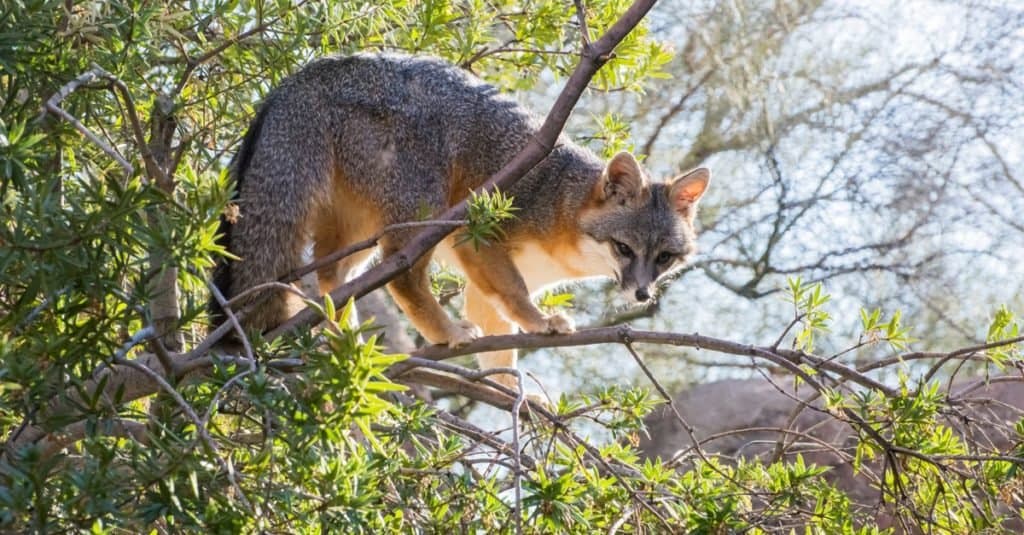
Gray foxes are less common than red foxes, but are also a native species.
©Evelyn D. Harrison/Shutterstock.com
The gray fox (Urocyon cinereoargenteus) is another native fox species in North America, commonly found in woodland areas. It occurs across much of the United States, extending into parts of Mexico and Central America. The gray fox’s preferred habitats include forests, brushlands, and scrublands, where its excellent climbing skills allow it to utilize both the ground and trees for shelter and foraging. Its unique ability to climb trees sets it apart from other fox species and enables it to access additional food resources.
Kit Fox
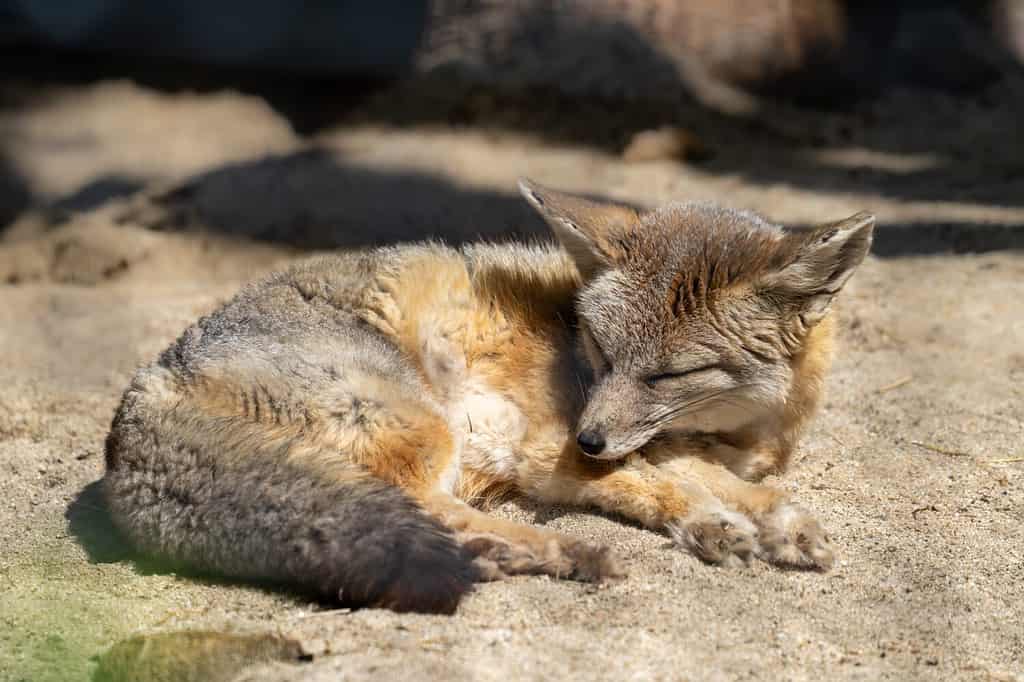
The kit fox is the smallest fox species in North America.
©Jason Mintzer/Shutterstock.com
The kit fox (Vulpes macrotis) primarily lives in the southwestern United States and northern Mexico, specifically inhabiting desert regions, such as grasslands, scrublands, and semi-arid areas. This small fox species has adapted to the harsh conditions of the desert, relying on nocturnal behavior to avoid extreme daytime temperatures.
Arctic Fox

Arctic foxes in North America inhabit Alaska and northern Canada in the Arctic Circle.
©bhavdip12/Shutterstock.com
The Arctic fox (Vulpes lagopus) is primarily associated with Arctic regions, including the Arctic tundra, and is found in northern North America, particularly in Alaska and the northernmost parts of Canada. Its thick white fur provides insulation in cold climates, and it has a remarkable ability to withstand freezing temperatures.
Island Fox
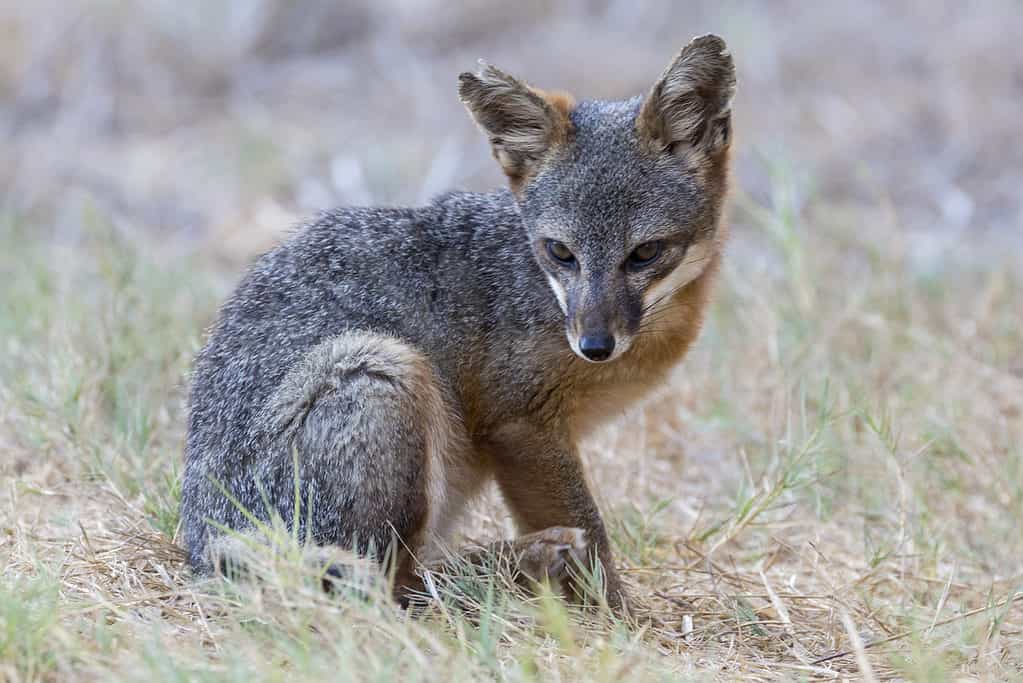
A rare, wild island fox searching for food on Santa Rosa Island in Channel Islands National Park. The island fox lives only on these islands and nowhere else in the world.
©iStock.com/BlueBarronPhoto
The island fox (Urocyon littoralis) is endemic to the Channel Islands off the coast of southern California. Interestingly, this unique fox has different subspecies that each occupy a specific island. The island fox has adapted to the island environments, exhibiting variations in size and coat coloration.
Swift Fox
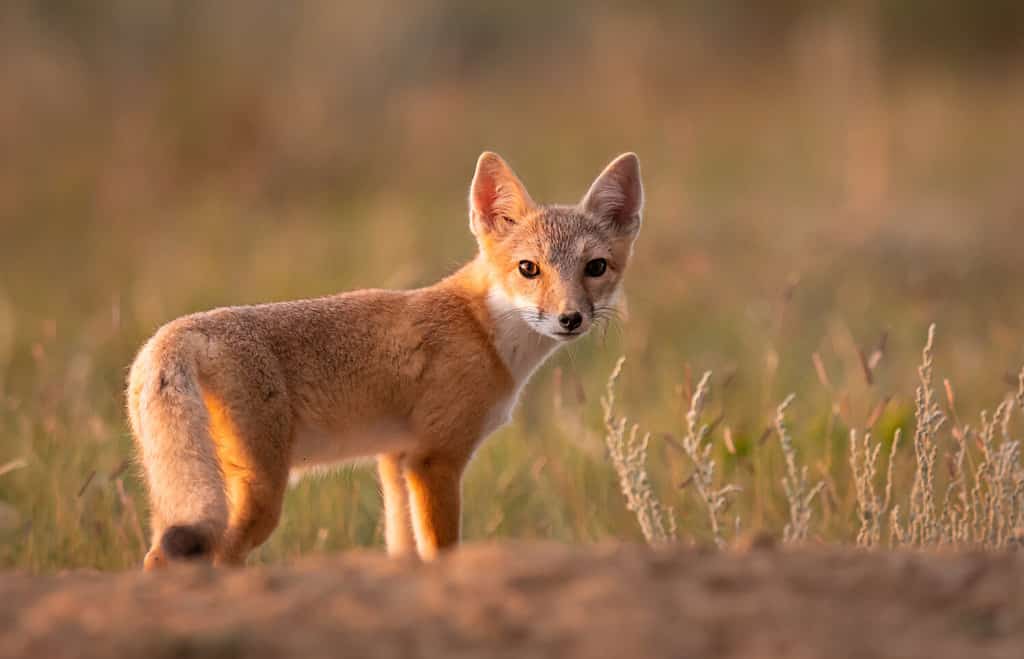
The swift fox lives in the grasslands of Canada and the United States.
©Ghost Bear/Shutterstock.com
Swift foxes (Vulpes velox) primarily inhabit grasslands and prairies in central and western parts of the United States and Canada. They are specially adapted to open grassy habitats and exhibit remarkable speed that allows them to hunt for small mammals, birds, and insects.
Foxes in Oregon
1. Red Fox
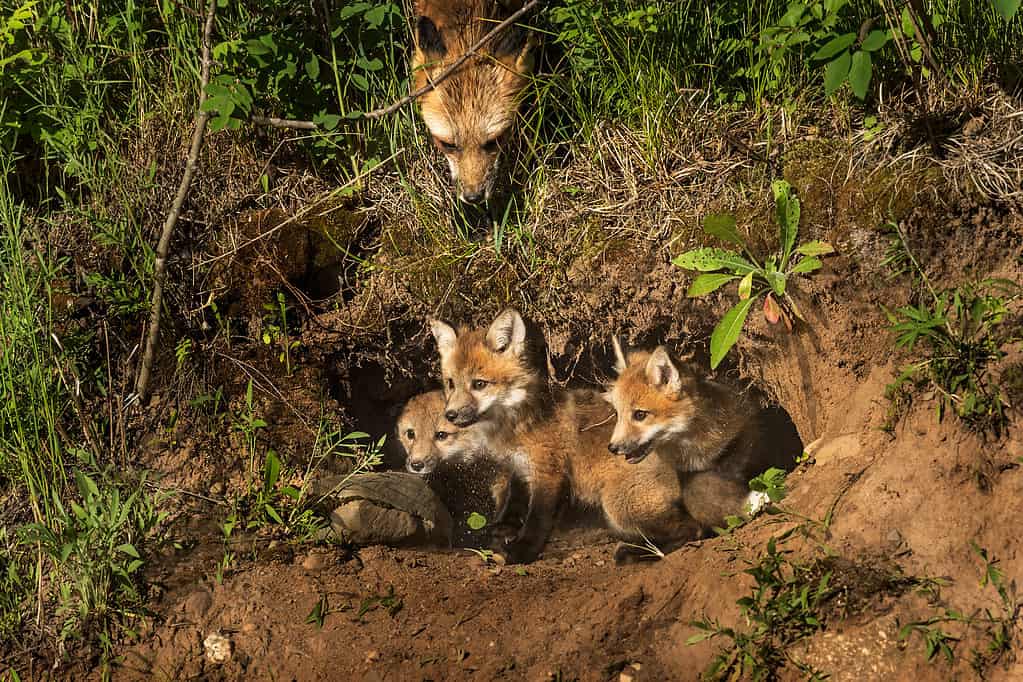
Red foxes live in places where they can have a suitable denning site.
©Geoffrey Kuchera/Shutterstock.com
Red foxes occur throughout Oregon. They live in both rural and urban areas, including forests, grasslands, agricultural lands, and suburban neighborhoods. In forested regions, however, red foxes make use of the dense vegetation for cover and denning sites. They are adaptable and can thrive in different elevations, ranging from coastal areas to mountainous regions. In Oregon’s agricultural landscapes, red foxes may take advantage of open fields and farmlands where they can find prey such as rodents and rabbits. Additionally, red foxes can adapt to urban environments, utilizing parks, green spaces, and even residential areas, where they scavenge for food and find shelter in dens beneath structures or in brushy areas.
2. Sierra Nevada Red Fox
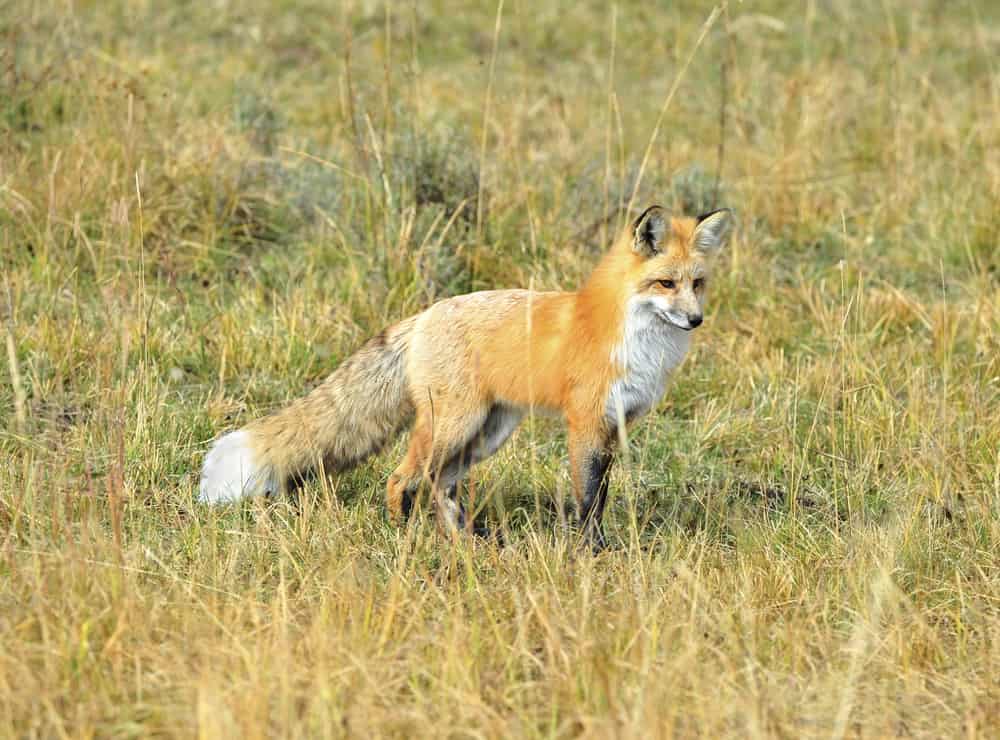
Sierra Nevada red foxes are a subspecies of red fox that is less common than the American red fox.
©worldswildlifewonders/Shutterstock.com
Sierra Nevada red foxes (Vulpes vulpes necator), a subspecies of the red fox, have a more limited distribution within Oregon. They are specifically found in the higher elevations of the southern Cascade Range, including parts of the Siskiyou Mountains and the Klamath Mountains in southern Oregon. These foxes inhabit alpine and subalpine habitats characterized by rocky slopes, meadows, and coniferous forests. Therefore, their range in Oregon is largely in the remote and rugged regions of Crater Lake National Park and the surrounding areas.
Sierra Nevada red foxes are adapted to colder climates and are known for their thick, luxurious fur that provides insulation in snowy environments. Due to their specific habitat requirements and smaller population size, the Sierra Nevada red fox is a rare and elusive species in Oregon, warranting conservation attention to protect its fragile population.
3. Gray Fox
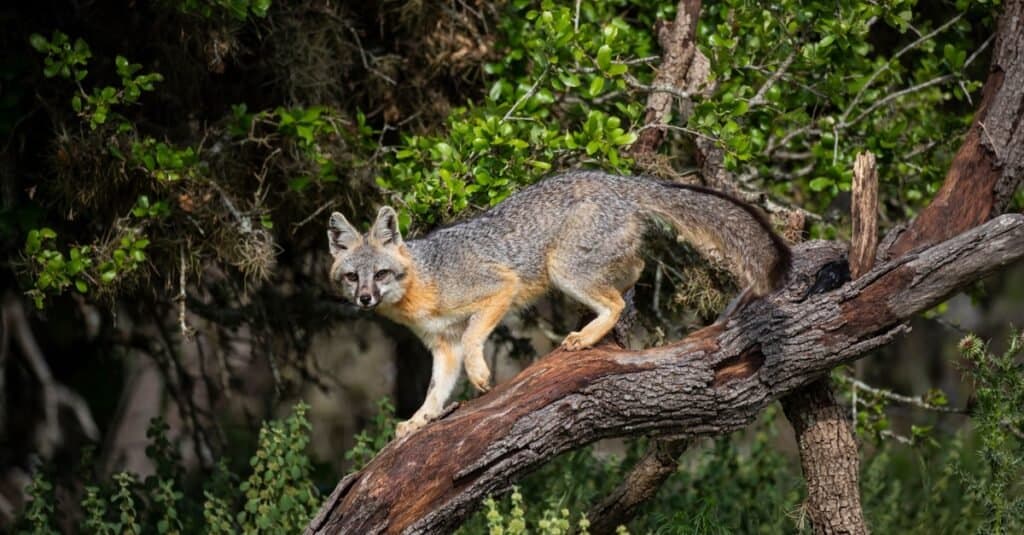
Gray foxes live in wooded areas and can climb trees, unlike other species.
©Danita Delimont/Shutterstock.com
Gray foxes live in select regions of Oregon, primarily in the southwestern part of the state. They inhabit a range of habitats, including mixed forests, woodlands, and brushy areas. Specifically, gray foxes tend to prefer areas with dense vegetation and cover, such as oak woodlands and riparian zones along streams and rivers. These foxes have adapted well to the varied landscape of Oregon, from the western slopes of the Cascade Range to the foothills of the Coast Range. While their distribution in Oregon is not as extensive as that of the red fox, gray foxes are still present in suitable habitats throughout the southwestern portion of the state, showcasing their ability to thrive in diverse ecosystems.
4. Kit Fox
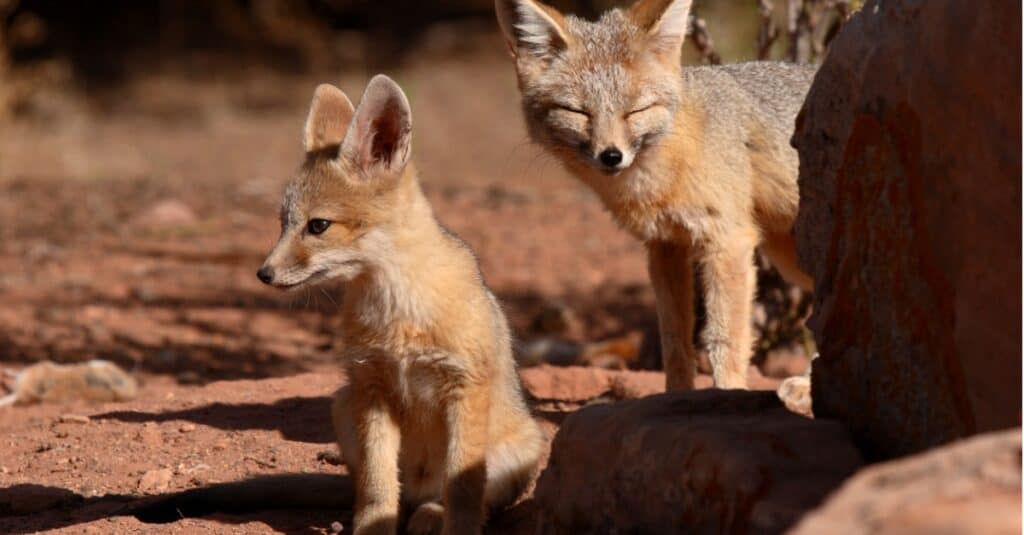
This kit fox inhabits desert regions and semi-arid areas.
©iStock.com/gatito33
Kit foxes are not native to Oregon, but the state’s Department of Fish and Wildlife says that they are present in small numbers. They have been spotted in Deschutes and Malheur counties, near Klamath Falls, and in southern Harney County. Otherwise, their range is primarily restricted to the southwestern United States and northern Mexico, including parts of California, Nevada, Arizona, Utah, and New Mexico. These foxes inhabit desert regions and semi-arid areas, characterized by sparse vegetation, sandy soils, and low-lying shrubs.
Encountering a Fox in the Wild
If you encounter a fox in the wild, it is important to remember that foxes are generally shy and tend to avoid human interaction. In such a situation, it is best to observe the fox from a distance and avoid approaching or attempting to touch it. Maintain a calm demeanor and speak softly to the fox to signal your non-threatening intentions. If the fox seems curious but not aggressive, you can slowly back away while keeping an eye on its behavior. It is crucial to respect the wild nature of the fox and not try to feed or lure it closer. If the fox displays aggressive behavior or shows signs of illness, it is advisable to leave the area and report the encounter to local wildlife authorities.
The photo featured at the top of this post is © Daniel Rodriguez Garriga/Shutterstock.com
Thank you for reading! Have some feedback for us? Contact the AZ Animals editorial team.






